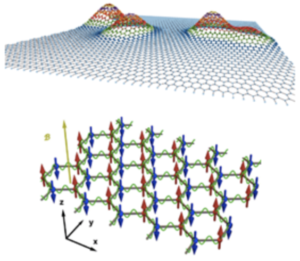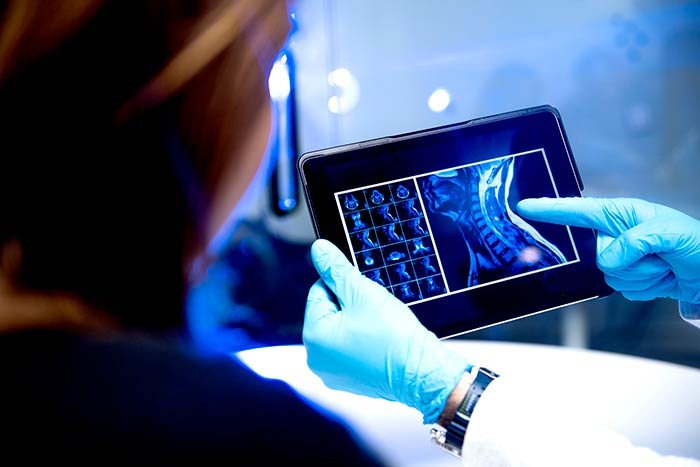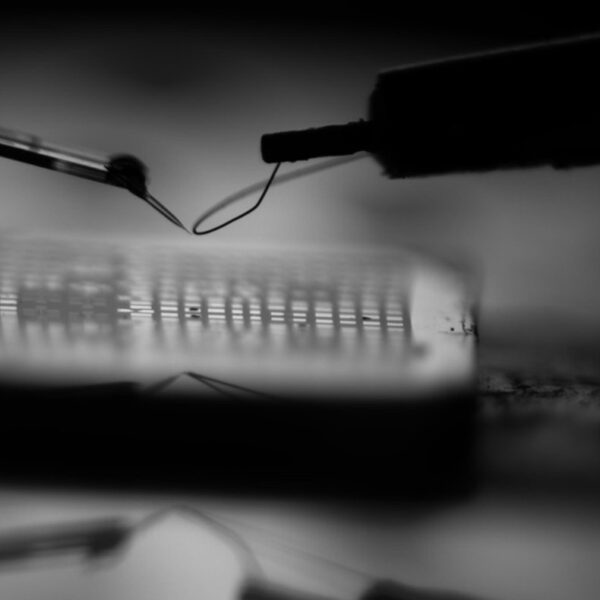Physics
Everything (In Theory)
Why can’t light escape a black hole? What exactly is dark matter? Why is the gravitational force so weak? In physics, we know everything is bound by the same rules and happens for a reason. It’s the “why” of every action and reaction that keeps us curious.
The College of Science physics program equips you with what we know about our universe — theories on matter, the forces, space, and time — so you can reach into the unknown and answer the question… why?
Diversity & Inclusion
The College of Science supports a culture where each person feels they belong, regardless of race, color, religion, religious creed, genetic information, sex, gender, gender identity, sexual orientation, age, national origin, ancestry, veteran or disability status. We celebrate the diversity of our community, and we seek to expand representation to further excellence. We commit to be a College where members act with respect, trust, collaboration, and communication, and where inappropriate behavior is reported and acted on without fear of retaliation.

People
Albert-Laszlo Barabasi
Northeastern’s Physics Program
Northeastern’s Physics Program
Faculty Research Areas
 The Astrophysics and Cosmology group at Northeastern University is leading cutting-edge research into the nature of the universe, including dark energy, large-scale structure, galaxy clusters, black holes across all mass scale and neutron stars, dark matter searches, and MeV gamma-ray observations. Prof. Blazek’s group probes the cosmological model using analytic methods, simulations, and maps made with the largest galaxy surveys (DES and LSST). Prof. McCleary’s group conducts balloon- and ground-based observations of gravitational lensing by galaxy clusters to understand their dark matter and astrophysics (SuperBIT and LoVoCCS). Prof. Aramaki’s group develops and utilizes sensitive detectors in underground and outer space (balloon/satellite) for dark matter searches and astrophysical observations (SuperCDMS, GAPS, and GRAMS). Prof. Lin’s group utilizes ground- and space-based observatories to carry out multi-messenger study of high-energy transient signals such as tidal disruption of stars by supermassive black holes and gravitational wave events (Chandra, XMM-Newton, and HST).
The Astrophysics and Cosmology group at Northeastern University is leading cutting-edge research into the nature of the universe, including dark energy, large-scale structure, galaxy clusters, black holes across all mass scale and neutron stars, dark matter searches, and MeV gamma-ray observations. Prof. Blazek’s group probes the cosmological model using analytic methods, simulations, and maps made with the largest galaxy surveys (DES and LSST). Prof. McCleary’s group conducts balloon- and ground-based observations of gravitational lensing by galaxy clusters to understand their dark matter and astrophysics (SuperBIT and LoVoCCS). Prof. Aramaki’s group develops and utilizes sensitive detectors in underground and outer space (balloon/satellite) for dark matter searches and astrophysical observations (SuperCDMS, GAPS, and GRAMS). Prof. Lin’s group utilizes ground- and space-based observatories to carry out multi-messenger study of high-energy transient signals such as tidal disruption of stars by supermassive black holes and gravitational wave events (Chandra, XMM-Newton, and HST).
Members:
Tsuguo Aramaki | Dark matter searches, gamma-ray observations | Website
Jonathan Blazek | Cosmology and galaxy surveys | Website
Dacheng Lin | Time-domain high-energy astrophysics | Website
Jacqueline McCleary | Galaxy clusters and weak gravitational lensing

The experimental biophysics group at Northeastern Physics develops and applies experimental techniques to study biological entities at various scales from biomolecules to cells to organisms: Single-molecule studies range from DNA structure and dynamics to RNA/protein unfolding to biopolymer sequencing; cell-level research interrogates the response of cancer cells to light; organism-level research focuses on the physics and connectivity of the brain.
Members:
Paul Champion | Quantum biology, proton tunneling, ultrafast protein dynamics and coherence| Website
Maijia Liao | Cytoskeletons in Neurons, Advanced Imaging Methods, Physics of Living Matter | Website
Bryan Spring | Cancer photomedicine, biophysical microscopy, laser microsurgery | Website
Srinivas (Sri) Sridhar | Quantitative MRI, Drug Delivery, Neurovisual Science| Website
Paul Stevenson | Quantum sensing, nanoscale biophysics, membrane dynamics | Website
Vivek Venkatachalam | Physics of brains and behavior| Website
Meni Wanunu | Nanoscale biophysics, nanopores, optics | Website
Mark Williams | Single-molecule nucleic acid interactions, retroviral replication, chromatin dynamics | Website
 Research in nanophysics and novel materials are emphasized. Faculty are involved in several research fields at the frontiers of these areas: spintronics, topological materials, superconductors, semiconductors, ferromagnets, mesoscopic physics, left-handed metamaterials, quantum chaos, nanotechnology and nanoparticle synthesis.
Research in nanophysics and novel materials are emphasized. Faculty are involved in several research fields at the frontiers of these areas: spintronics, topological materials, superconductors, semiconductors, ferromagnets, mesoscopic physics, left-handed metamaterials, quantum chaos, nanotechnology and nanoparticle synthesis.
Members:
Alberto de la Torre Duran | Quantum materials | Website
Don Heiman | Topological Materials, MBE Films, AFM Spintronics | Website
Nathan Israeloff | Polymer glass aging, non-equilibrium measurements, fluctuation–dissipation
Swastik Kar | Graphene, 2D Boron Nitride, h-BCN, Carbon Nanotubes, Topological Insulators | Website
Sergey Kravchenko | Metal-insulator transition, Wigner crystallization, Flat-band materials
Latika Menon | TiO2 nanotubes, Carbon nanotubes, GaN nanowires
Srinivas (Sri) Sridhar | Quantitative MRI, Drug Delivery, Neurovisual Science| Website
Paul Stevenson | Quantum sensors, quantum communication, nanoscale biophysics| Website
Meni Wanunu | Nanoscale biophysics, nanopores, optics | Website
Mingzhong Wu | Topological quantum materials, magnetic thin films, spintronics, magnonics
 Experimental particle physics research involves exploring unknown questions about nature on the smallest scales: What constitutes dark matter? Why is the Higgs boson so light? What produced the imbalance between matter and antimatter that we observe today? Are there extra dimensions? Are there new particles or fundamental interactions that are yet to be discovered? Our group in experimental particle physics works on the Compact Muon Solenoid (CMS) experiment at the Large Hadron Collider (LHC) at CERN. We study precision measurements of Standard Model processes and search for signatures of new physics, such as leptoquarks, dark matter candidates, and exotic production and decays of Higgs bosons. In parallel we have a broad involvement in the operation of the CMS detector and development of new detector systems for the High Luminosity LHC upgrade.
Experimental particle physics research involves exploring unknown questions about nature on the smallest scales: What constitutes dark matter? Why is the Higgs boson so light? What produced the imbalance between matter and antimatter that we observe today? Are there extra dimensions? Are there new particles or fundamental interactions that are yet to be discovered? Our group in experimental particle physics works on the Compact Muon Solenoid (CMS) experiment at the Large Hadron Collider (LHC) at CERN. We study precision measurements of Standard Model processes and search for signatures of new physics, such as leptoquarks, dark matter candidates, and exotic production and decays of Higgs bosons. In parallel we have a broad involvement in the operation of the CMS detector and development of new detector systems for the High Luminosity LHC upgrade.
Members:
Emanuela Barberis | CMS experiment
Johan Bonilla Castro | CMS experiment
Toyoko Orimoto | CMS experiment
Louise Skinnari | CMS experiment
Darien Wood | CMS experiment
 Members of this group are also members of the interdisciplinary Network Science Institute. They seek to discover and inspire fundamentally new ways to measure, model, predict, and visualize meaningful interactions and interconnectivity of social, physical, and technological systems.
Members of this group are also members of the interdisciplinary Network Science Institute. They seek to discover and inspire fundamentally new ways to measure, model, predict, and visualize meaningful interactions and interconnectivity of social, physical, and technological systems.
Members:
Albert-László Barabási | biological networks, science of success, applications of control theory to networks, development of network models of resiliency in systems | Website
Dima Krioukov | latent network geometry, maximum-entropy random graph ensembles and random geometric graphs, causal sets, navigation in networks, and fundamentals of network dynamics | Website
Esteban Moro Egido | big data, network science, and computational social science, with a focus on human dynamics, collective intelligence, social networks, and urban mobility in areas such as viral marketing, natural disaster management, and economic segregation in cities
Mauricio Santillana | modeling of geographic patterns of population growth, modeling fluid flow to inform coastal floods simulations and atmospheric global pollution transport models, design and implementation of disease outbreak prediction platforms, mathematical solutions to healthcare
Alessandro Vespignani | Contagion models and adaptive behavior, epidemics in structured populations, resilience of coevolving and interdependent networks, conversations in online social networks, global epidemic and mobility model, mapping world languages through microblogging platforms | Website
 Theoretical Biological Physics group members apply theoretical and computational tools of statistical and nonlinear physics to understand fundamental aspects of the behavior of living systems across molecular to organ scales in health and diseases. Ongoing studies probe the energetics and dynamics of large-scale biological assemblies, physical genetics, mechanical properties of cellular assemblies and biomaterials, cancer metastasis and immune system dynamics, cardiac nonlinear dynamics, and synaptic connectivity and brain function. Synergy between those different areas is fostered by the collaborative environment of the Center for Theoretical Biological Physics (website).
Theoretical Biological Physics group members apply theoretical and computational tools of statistical and nonlinear physics to understand fundamental aspects of the behavior of living systems across molecular to organ scales in health and diseases. Ongoing studies probe the energetics and dynamics of large-scale biological assemblies, physical genetics, mechanical properties of cellular assemblies and biomaterials, cancer metastasis and immune system dynamics, cardiac nonlinear dynamics, and synaptic connectivity and brain function. Synergy between those different areas is fostered by the collaborative environment of the Center for Theoretical Biological Physics (website).
Members:
Max Bi | Mechanics of cellular assemblies | Website
Michele Di Pierro| Physical genetics| Website
Alain Karma | Cardiac nonlinear dynamics | Website
Herbie Levine | Cancer and immune system dynamics | Website
Armen Stepanyants | Neurogeometry and brain function | Website
Paul Whitford | Computational molecular biophysics | Website
 Group members apply theoretical and computational tools to study the quantum properties of condensed matter (solid state) systems. A major focus within the group is understanding novel and unusual phases of matter, as well as non-equilibrium aspects of materials. Ongoing studies explore the topology of quantum degrees of freedom (e.g., electrons, magnons, and phonons), quantum magnetism (e.g., quantum spin liquids), unconventional superconductivity (e.g., high-temperature superconductors and topological superconductivity), and other highly entangled states of matter with relevance to quantum information sciences. We work in a highly collaborative environment and often publish jointly with experimental groups. Synergy between different areas is fostered by the Quantum Materials and Sensing Institute at Northeastern University.
Group members apply theoretical and computational tools to study the quantum properties of condensed matter (solid state) systems. A major focus within the group is understanding novel and unusual phases of matter, as well as non-equilibrium aspects of materials. Ongoing studies explore the topology of quantum degrees of freedom (e.g., electrons, magnons, and phonons), quantum magnetism (e.g., quantum spin liquids), unconventional superconductivity (e.g., high-temperature superconductors and topological superconductivity), and other highly entangled states of matter with relevance to quantum information sciences. We work in a highly collaborative environment and often publish jointly with experimental groups. Synergy between different areas is fostered by the Quantum Materials and Sensing Institute at Northeastern University.
Members:
Arun Bansil | First principles studies oftopological materials and optical spectroscopy
Hai-Ping Cheng| Theory, modeling, and simulation of multi-scale physics and systems
Adrian Feiguin | Computational modeling of time-resolved spectroscopies and non-equilibrium phenomena | Website
Gregory Fiete | Topology, magnetism, and quantum materials out-of-equilibrium | Website
Alain Karma | Pattern formation and nonequilibrium phenomena in materials
Qimin Yan | Computational Physics, Quantum Materials, Machine Learning for Complex Materials, Quantum Defects, Functional Semiconductors | Website
Yizhi You | Quantum Fields and Entangled Qubits in Correlated Systems | Website

Members of our group apply techniques from Mathematics and AI to study particle physics, cosmology, and string theory, often with overlap between the subjects. In particle physics, research is focused on Physics beyond the standard model, including understanding the role supersymmetry and supergravity. In Cosmology, questions include understanding the physics directly following the initial singularity, known as inflation, the origin of dark energy, the main form of energy in our Universe that causes it to expand at an accelerated rate, and the nature of dark matter, which is some matter of unknown origin that plays a crucial role in the formation of galaxies. Finally, the study of string theory and its implications for particle physics and cosmology requires understanding the geometry and topology of extra dimensions and how to solve the stringent mathematical and physical consistency conditions that come with a UV complete theory of quantum gravity.
Members:
Ning Bao | Holography, Quantum Information Theory | Website
James Halverson | AI, String Theory, Mathematics, String Phenomenology | Website
Sarah Harrison| Quantum Field Theory, String Theory, Mathematics | Website
Pran Nath | Supergravity, Particle Physics, Cosmology
Brent Nelson | AI, Cosmology, String Phenomenology
Fabian Ruehle | AI, String Theory, Mathematics, String Phenomenology | Website
Tomasz Taylor | Holography, Scattering Amplitudes
Offers an introduction to biophysics focusing on development and implementation of physical models for various biophysical processes that occur in living organisms and in living cells.
Offers an introduction to biophysics focusing on development and implementation of physical models for various biophysical processes that occur in living organisms and in living cells.
Introduces research through experiments that go beyond the simple demonstration of basic physical principles found in introductory physics courses. Experiments focus on lasers, fiber-optic communication, spectroscopy, Faraday rotation, speed of light, semiconductor physics, Hall effect, fuel cells, and Fourier analysis of music and sound.
News

an robots be used to extract ice on the moon? This NASA research fellow from Northeastern wants to find out
In the Media
Read the latest newsletter from the Physics department.
Read the Newsletter









